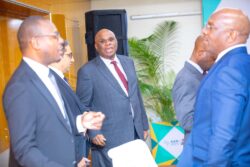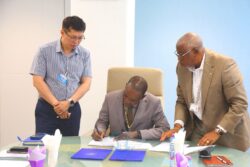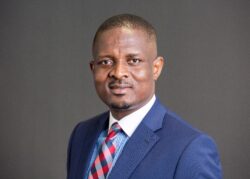In September 2022, the United Nations organised a summit to discuss how to stop the global educational systems from collapsing in the wake of difficulties in the global economy. The summit, titled ‘Transforming Education Summit 2022: Global mobilisation to save educational systems’, provided an opportunity for global citizens to hold governments and policymakers accountable for their commitments to education.
At a Paris pre-summit in June, the United Nations Secretary General, Mr. António Guterres, identified three crises facing education systems across the world: these are equity, quality and relevance.
- On equity, 258 million children – the majority girls – are out of school
- On quality, half of the 10-year-old students in low- and middle-income countries cannot read basic text; and
- On relevance, current education systems are outdated
The summit’s key lesson was that governments should not sacrifice education for anything, if they are to continue working toward attaining SDG 4 – which enjoins governments to “Ensure inclusive and equitable quality education, and promote lifelong learning opportunities for all”.
Economic indications point to the fact that in many developing countries progress toward SDG 4 is ‘badly off track’, largely due to the COVID-19 pandemic and ongoing invasion of Ukraine by Russia. Russia’s aggressive act has exacerbated the economic conditions of poor countries, including Ghana. Small wonder that Ghana’s government has turned to the IMF for a bailout barely three years after exiting the economy from previous harsh conditionalities.
In times of pandemic like COVID, sectors such as education tend to suffer budget cuts; and so it’s no wonder education across the developing world has been severely hit. Figures indicate that at its peak, between 1.2 billion – 1.6 billion children were out of school globally. For some countries it took up to two years for children to return to school, and learning has never improved for many teachers and their students.
Education in Africa
In Africa, it is estimated that some 100 million children are out of school, and girls are 10 percent less likely to complete lower secondary school in sub-Saharan Africa. While 1 in 5 children and adolescents of primary and secondary school age live in sub-Saharan Africa, the region is home to a third of those who cannot read.
According to UNICEF, before the COVID-19 pandemic about 80 percent of African children in school could neither read, understand nor respond to questions related to a 150-word piece, which they should do by age 10. Perhaps this learning gap worsened due to the pandemic. Collaborative and cooperative efforts between governments and multilateral agencies to reverse the negative impact of global economic difficulties on education are needed. If there was any time governments needed to mobilise their populations to sustain education, this is the time.
Five action priorities
UNESCO has outlined five priorities to guide governments in keeping their educational systems on track. The first priority is having inclusive, equitable, safe and healthy schools to ensure every child’s right to education. UNESCO’s Futures of Education report reinforces that the gaps in access today stem from yesterday’s exclusion and oppression.
The second priority is on learning and skills for sustainable development, which aim at learning that is relevant for today’s workforce and prepares children for the future. UNICEF describes such skills as “basic literacy and numeracy; transferable skills, including life skills and socio-emotional skills; digital skills; job-specific skills; and entrepreneurial skills”.
The third priority pertains to equipping the teaching profession and addresses teacher shortages, qualifications and emerging professional development needs. The Futures of Education report highlights that teachers in sub-Saharan Africa lack basic qualifications and training.
The fourth priority is digital learning and transformation. Though the pandemic accentuated the need for digital learning, low connectivity in poor countries and digital divides persist. According to UNICEF, in at least 1 in 3 low-income countries with available data, more than 85 percent of young people are off-track in secondary-level, digital and job-specific skills attainment.
Globally two-thirds of the 1.3 billion school-age learners lack Internet access at home; and girls and women are “less likely than boys and men in their households to have digital skills, access to computers and the Internet to benefit equally from remote learning”, says the UNICEF report. In terms of digitalisation and Internet access, Ghana appears to be doing well compared with West African neighbours – though efforts to reach more remote places need to be intensified.
Education financing
The final priority is education financing. UNECSO and UNICEF forecast that with the high population growth rate in Africa, funding education will increase budgetary pressure on poor countries… with the possibility of jeopardising efforts of attaining SDG 4.
Data from the UNESCO Institute for Statistics (UIS) indicate that Ghana ranked 14th out of 36 sub-Saharan African (SSA) countries in 2018 for government expenditure allocated to education, at 18.6%. This is higher than the sub-Saharan African mean of 16.8%, but represents a decline from 22% in 2016 and 21% in 2017. For West Africa, Ghana ranks fifth among the top-six countries.
The amount allocated to education each year has increased in real terms but remained stable as a proportion of GDP. A decline from 3.9% of GDP in 2016 to 3.1% in 2018 was later partly reversed, though the figure remained constant at 3.5% in 2019 and 2020.
Expenditure
According to UNESCO data, the share of education expenditure provided by central government, through the Ministry of Finance increased from 75% in 2018 to 88% in 2020, while internally generated funds (i.e. from other government and institutional sources) fell from 22% to 9%. The remainder (between 1% and 3%) came from donor funding.
Curiously 56% of the total budget in 2021, including donor sources, were allocated to employee compensation – though the figure was down from 82% in 2019. This decrease was due to a significant amount of funding to the Ministry of Education from the World Bank, Global Partnership for Education (GPE) and Ghana Accountability for Learning Outcomes Project (GALOP).
A breakdown of the expenditure by subsector indicates that basic education (including JHS) accounted for 30.1%, followed by tertiary education with 25.2% and secondary education at 12.9%. Again, nearly 100% of these funds for basic education were allocated to employee compensation, as were 51.1% of tertiary funds and 100% of secondary funds. In all, the analysis shows that for basic and secondary education – aside from project and donor funds (including GALOP, which is a loan, not a grant) – almost 100% of allocated resources were spent on employee compensation.
Reforms in Ghana
A recent study titled ‘Spotlight on Basic Education Completion and Foundational Learning in Ghana’ found that access has been a historic strength of Ghana’s education system, although issues remain with over-age enrolment. While there is recent progress in reading, basic education learning outcomes remain low. Since 2017, Ghana has embarked on ambitious reforms: including development of teacher standards, introduction of a new curriculum, establishment of fee-free senior secondary education, an overhaul of pre-service teacher education, and reforms to improve accountability and learning outcomes across basic schools.
In all, Ghana is doing well on ‘clarity of national vision, leadership and roles’ and ‘effective and appropriate curriculum’; but ‘adequate resources focused on foundational literacy and numeracy’ and ‘community and parental engagement’ remain areas of concern. Besides, while there are good examples of effective supportive supervision and teacher-delivery of the new curriculum, these are also areas where improvements are needed if Ghana is to achieve the Education Strategic Plan 2018–2030 objectives.
Declining learning outcomes
An Early Grade Reading Assessment (EGRA) in Ghana, conducted in 2017 across 168 districts, found that by the end of second grade (P2) pupils could read on average just 2.5 words per minute… with 77% being unable to read even a single word (USAID 2018). Earlier results of the EGRA in 2015 showed that by the end of P2, most public school pupils struggled with even foundational reading skills. In both Ghanaian languages of instruction and in English, at least half and often more of the pupils assessed could not read a single word correctly. Less than 2% were able to read with fluency and comprehension.
Also, the 2015 Early Grade Mathematics Assessment (EGMA) found that at the end of P2, pupils did reasonably well on most procedural items – number identification and level 1 addition and subtraction – scoring between 46% and 72% correct. However, performance was worse on conceptual tasks. For example, 73% of pupils could not correctly answer a single level 2 subtraction question (involving subtraction of at least one two-digit number). Pupils tended to memorise facts, rules and procedures, rather than learning basic concepts.
Similarly, the 2018 National Education Assessment (NEA) showed that between 19% and 25% of pupils met the NEA proficiency criterion (scoring 55% or above) across grades and subject areas. Sadly, between 35% and 48% of pupils scored below minimum competency (scoring 35% or below). Comparison of the 2016 and 2018 results shows a general downward trend.
While the difference in standard deviations is not significant, the difference is significant in terms of percentage of pupils reaching various competency levels. The share of students below minimum competency in English at P4 increased from 29% in 2016 to 44% for 2018. Certainly, these are disturbing statistics given that it is mostly trained teachers who teach at the public schools.
As indicated under financing education, more than 56% of the total budget in 2021 went into paying salaries and other allowances of teachers. This has been the trend for many years. One report indicates that Ghana’s Ministry of Education (MoE) is one of the biggest employers in Africa, perhaps with ghosts making up a chunk of workers on the payroll of the ministry and its agencies.
Government priorities
The UNESCO report indicates that MoE has developed a “lens for prioritisation” through which all proposed policies and interventions must be viewed. These interventions comprise three questions: whether ongoing interventions (a) improve learning outcomes; (b) improve accountability for learning outcomes; and improve (c) equity
Free SHS
Undoubtedly, one of Ghana’s biggest educational reforms in recent memory is the Free Senior High School policy. The policy ensures that senior high school is available to all students regardless of BECE performance. So far, the policy has led to a significant expansion in enrolment, with a 16% increase between 2017/18 and 2019/20; and has largely succeeded in getting children off the streets.
STEM/TVET
Science, technology, engineering and mathematics (STEM) and Technical and Vocational Education Training (TVET) are additional critical areas of reform in Ghana. The two areas are a priority for the current Minister of Education, Dr. Yaw Osei Adutwum – who has embarked on plans to establish at least 20 model STEM centres across the country, besides integrating TVET into free secondary policy and equipping TVET schools across the country.
GATE
The ‘Gifted and talented education’ (GATE) programme is another major area of focus for Dr. Osei Adutwum. Ghana plans to integrate GATE into its strategy to ensure inclusive education. GATE aims to ensure Ghana’s most gifted and talented young people have access to enrichment and accelerated programmes, irrespective of their religious and socio-cultural backgrounds. In all, GATE will empower deprived and talented children to fully develop their capabilities in both dedicated institutions and mainstream education.










